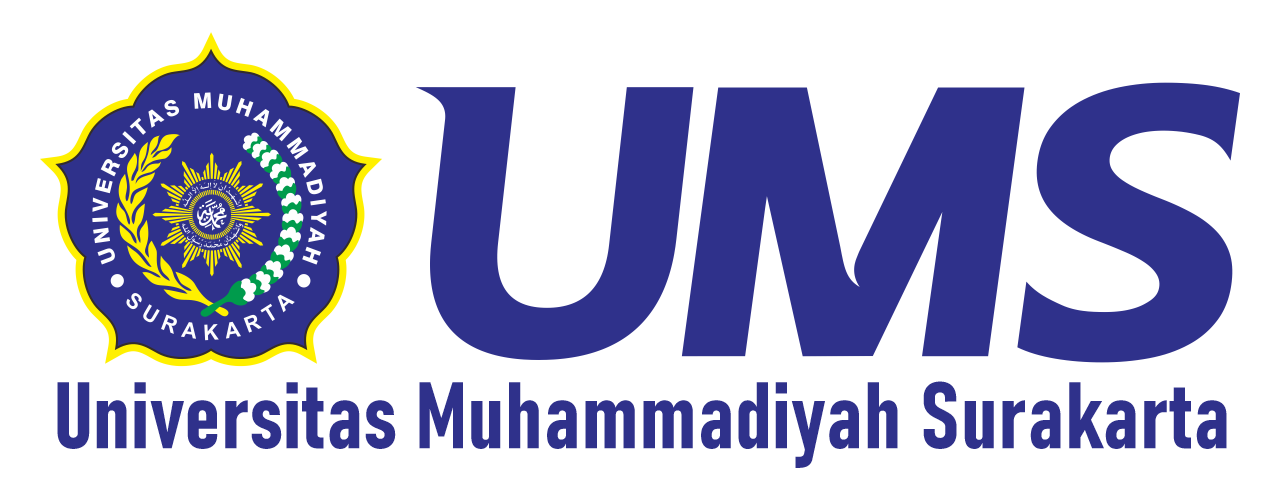Identification of Geophysical Conditions of Landslide Areas Ngargoyoso District, Karanganyar Regency
Keywords:
Landslide point, Landslide pattern, Early warning systemAbstract
Landslides continue to pose a major threat to communities living in mountainous areas, such as Ngargoyoso District. Previous studies have shown that landslide points are scattered across several villages: Dukuh Village with 9 points, Nglegok with 2 points, Jatirejo with 1 point, Ngargoyoso with 6 points, Kemuning with 5 points, Segorogunung with 10 points, Girimulyo with 3 points, and Berjo with 5 points. The pattern of landslide events in the study area is clustered, with an average value of 0.65. This research aims to identify and analyze the geophysical characteristics of landslides in Ngargoyoso District. The initial step in the research involved a literature review on factors causing landslides, followed by creating a list of areas as location guides. Landslide identification was carried out descriptively, and various factors believed to contribute to landslides were identified and analyzed. The results of this study indicate that (a) geophysically, landslides in the area mostly occur in regions characterized by high rainfall (394.1 mm/hour), moderate to steep topography (slope ≥9%), geological formations consisting of Lawu volcanic rock, geomorphological features of faulted folding hills, and land use primarily involving buildings and settlements; and (b) the main type of landslide is predominantly the fall type, consisting of soil, gravel, and rock materials, totaling 24 points, along with creep-type landslides observed at 17 points. Fall-type landslides are dominantly found in Nglegok Village (2 points), Dukuh Village (5 points), Ngargoyoso Village (4 points), Kemuning Village (5 points), Puntukrejo Village (1 point), Girimulyo Village (1 point), Berjo Village (3 points), and Segorogunung Village (1 point). Meanwhile, creep-type landslides are spread across Segorogunung Village (8 points), Berjo Village (2 points), Girimulyo Village (2 points), Ngargoyoso Village (2 points), Dukuh Village (2 points), and Jatirejo Village (1 point).
Downloads
References
Alhasanah F. Pemetaan dan Analisis Daerah Rawan Tanah Longsor Serta Upaya Mitigasinya Menggunakan Sistem Informasi Geografis (SIG). Tesis Sekolah Pascasarjana IPB. Bogor: IPB.
Basri, B. (1989). Geologi dan Morfologi Pegunungan Lawu. Universitas Gadjah Mada Press.
BNPB RI. 2020. Data Informasi Bencana Indonesia (DIBI). Diakses pada tanggal 20 Mei 2020 dengan alamat: http://dibi.bnpb.cloud.
Chang, J., et al. (2018). "Landslide Susceptibility Assessment in Volcanic Regions." Journal of Geohazards and Environmental Engineering, 15(2), 35-49.
Hakim, D. (2017). Bahaya Geologi di Indonesia: Tinjauan Komprehensif. Penerbit Geografi.
Hardjono, Imam., Cholil, Munawar. 2012. Pemanfaatan Ruang dan Model Pengelolaan Longsor Lahan di Kecamatan Ngargoyoso Kabupaten Karanganyar Provinsi Jawa Tengah. Laporan Penelitian Reguler Kompetitif UMS Tahap 1. Surakarta: Fakultas Geografi UMS
Liu, H., Zhang, Y., & Xu, Z. (2019). "Vegetation Cover and Landslide Mitigation in Mountainous Regions." Environmental Earth Sciences, 78(6), 88-102.
Manimaran, dkk. 2012. Characterization and disaster management of landslides in the Nilgiris mountainous terrain of Tamil Nadu, India. International Journal Of Geomatics And Geosciences Volume 3, No 1, 2012.
Nugroho, S., Hanifah, R., & Kurniawan, D. (2020). "Utilizing Remote Sensing and GIS in Landslide Risk Mapping in Hilly Areas." Journal of Remote Sensing and GIS, 15(2), 72-86.
Nugroho, Udhi Catur., Fahrudin, dan Suwarsono. 2014. Pemetaan Indeks Resiko Gerakan Tanah menggunakan Citra DEM SRTM dan Data Geologi di Kecamatan Pejawaran, Kabupaten Banjarnegara. Seminar Nasional Penginderaan Jauh 2014. Semarang: UNDIP.
Nuraeni, D., Nasution, Z., & Suryani, E. (2020). "Penerapan GIS dan Penginderaan Jauh dalam Pemetaan Risiko Longsor." International Journal of Applied Geospatial Research, 9(2), 75-88.
Pham, H., et al. (2017). "Geophysical Factors Influencing Landslide Types: A Case Study of Mountainous Areas in Vietnam." International Journal of Geoscience and Environment, 28(4), 123-136.
Putranto. 2006. Potensi bencana tanah longsor di kecamatan Tanon Kabupaten Klaten. Skripsi S1 Fakultas Geografi UMS. Surakarta: Fakultas Geografi UMS
Siregar, E., Lestari, S., & Santoso, H. (2015). "Pengaruh Aktivitas Manusia terhadap Stabilitas Lereng: Studi Kasus di Dataran Tinggi Indonesia." Journal of Environmental Management, 17(3), 240-251.
Subekti, A., & Santosa, R. (2017). "The Relationship between Human Activities and Landslides in Hilly Areas." Journal of Geological Engineering, 15(4), 300-312.
Sutikno, dkk. 2001. “Pengelolaan Data Spasial Untuk Penyusunan Sestem Informasi Penanggulangan Tanah longsor di Kabupaten Kulon Progo Daerah istimewa Yogyakarta”. Makalah Seminar Dies Fakultas Geografi UGM-ke -38 Tanggal 29 Agustus 2001, Yogyakarta: Fakultas geografi UGM
Sutrisno, T., & Prasetyo, E. (2018). "The Influence of Geological Structure on Landslide Susceptibility in Steep Sloping Areas: A Case Study in Central Java." Indonesian Journal of Geology, 27(3), 190-202.
Wahyudi, R., Subagyo, B., & Prasetyo, P. (2021). Integrasi GIS dan pemantauan lingkungan untuk pengurangan risiko bencana longsor di wilayah rawan. Jurnal Pengurangan Risiko Bencana, 9(1), 75-84.
Yunus, Hadi Sabari. (2010). Metode Penelitian Wilayah Kontemporer. Yogyakarta: Pustaka Pelajar.
Downloads
Submitted
Published
How to Cite
Issue
Section
License

This work is licensed under a Creative Commons Attribution-NonCommercial-ShareAlike 4.0 International License.




